“I’m not a musician. I consider myself more of a technician. I compose more by reaction than by harmony.”
For many of our readers, Daniel Bressanutti will require no introduction. As a founding member of Front 242 he is indisputably one of the architects of Electronic Body Music, his role as a sound designer and composer inextricably linked to that group’s legacy as the progenitors of modern EBM. We recently had a conversation about Not Bleeding Red, the debut album from Nothing But Noise, the new project from Daniel and 242 co-founder Dirk Bergen, and found a wealth of topics and jumping-off points in the 97 minute LP of 70s-inspired electronic composition, and are finding more as we continue to dig into it. Last week we were extremely pleased to have the opportunity to speak to Daniel about the genesis of the project, its future, and the differences between art and commerce and even more broadly, sound and music.
ID:UD: We were wondering how Not Bleeding Red fits in with the work you’ve done as Male or Female aand the more experimental stuff you’ve done recently with 242. You’ve stated that you didn’t have a specific goal in mind when you went to record this album, were you trying to experiment with some different sounds or continuing some earlier ideas you wanted to explore further? What was the genesis of it?
Daniel: We had a big talk and we knew where we wanted to go, and from where we wanted to start, and also what connections we wanted to make with music from the past. We never made a big secret of the fact that everything we do with Nothing But Noise is very influenced by synthesizers and the way they were used in the past by other musicians. So that was the main goal. Now, where does my way of working come in? I didn’t try to input anything from my Front background or my Male or Female background. If it’s there it’s because it’s me. When you do music, whatever you try, there will always be a little trace of something. Even when I did some classical pieces, I still had people come to me and say “I heard a little bit of Front 242 there.” Maybe it’s true, maybe in the way I work rhythm in. I don’t know. I myself can’t hear this, of course. Listeners have an easier time with that.
ID:UD: Not Turning Red seems like a very “intellectual” record in that it engages the listener specifically at a mental level. A lot of your history is obviously very connected to “body” music, was there a deliberate attempt to avoid that? How do you approach making music to engage the mind?
Daniel: No, it was not deliberate. Even with Front 242 the balance between wanting to reach people’s emotions and their bodies and also their intellects, is shared. In Nothing But Noise that sharing is the same but the music is different. Basically, there’s no difference when I approach music – like I said, with 242, Nothing But Noise or classical things – the approach is the same. There’s a balance. When I’m working on a machine, for example turning a knob on oscillator, there’s a certain physical sensation I want to translate. I have a physical experience when I turn the knob and then I hear something. When I put everything together, when I design sounds, that’s calling more to the intellectual side. You call images, music is also a lot of calculations, so you’re calling more to the mind than the body.
ID:UD: This is the first work you and Dirk Bergen have done since the very early days of Front 242. We’re interested in how you guys worked together after such a long time off. We know from reading the Quietus interview that you’ve remained friends, but how was it different coming back to work together? How much of the project evolved just from you two working together?
Daniel: In all those years, we never stopped being friends and since music is such a big part of both our lives we never stopped talking about it. We mostly like the same types of music, so it’s easy to share feelings about it. For years and years we’ve said we should try to do something together again when there’s time, and the time came. We had spoken so much about it that it was quite natural to go into the working environment. It was as if we’d never stopped making music together. At the beginning of 242 we had a relationship based on making music together, and in going back we found that relationship was just where we’d left it.
ID:UD: So it felt like a natural continuation of what you’d done together before?
Daniel: Yes, and also because we’d talked about what we were going to do, there’s was no question of “is this a good idea or not,” we just went in and worked together because everything was said and done, as if on paper.
ID:UD: When you started working on the project was there a goal of building a record for release or was it just for the sake of making music together?
Daniel: Just working together. Afterwards it’s a bit difficult to say, but the goal was to have fun first. After a little bit of work we realised from the reactions of people that we maybe had something that was interesting. The music was at first for us only, not for a record, not for a label, nothing. At later stages, if we had a discussion it was “let’s make a hundred vinyl copies” or something, but it we never dreamed of releasing it more widely. That came from friendly pressure from other people.
ID:UD: We wanted to ask you about how Erwin [Jadot] became involved with the project. We know that you worked on a record by his Dream Invasion project; how did he get involved and how did he fit in with you and Dirk?
Daniel: Again, we were friends for years. He had a record shop in his earlier life and that’s how we met. The big thing about that shop was not sales but talking about music, coming together and listening to this and that. We stayed friends from then on. And with him being a musician too, he was always there when Dirk and I talked. We never talked or thought about the project not being the three of us. He might have different musical goals in his life outside of this, but when we’re speaking about this project we’re on the same wavelength.
“When you build sequences up you try to have them right the first time, because it’s ugly to cut back into sequencing. It’s hell.”
ID:UD: We noticed a lot of classical synth motifs on the record, homages to Tangerine Dream and plenty of other artists of that era, but seen through the lens of very modern production. We’re curious how you went about striking the right balance between older and newer elements? How did you keep it from becoming a “retro electronic” sounding record?
Daniel: That came when we decided to produce the record. I must say that at first it was more amateurish, it was music for fun. If it sounded good in the room we called a studio we were happy. But of course as soon as we began thinking about a record, I became very anal about sound. I wanted it to sound…I wouldn’t say “good”, but I had a specific sound in mind and a specific type of production. To avoid sounding passe…we didn’t have a lot of work to do because already in having fun we’d infused a lot of modern technology which didn’t exist at the time. Even if we could have done it at the time you wouldn’t have even thought about it because the history of music always moves on, and you apply the theories of today to the music of yesterday. Working only with analog, we could have done this (and other people could maybe have done it at the time), but no one did.
Refining the production, we wanted an easy balance between homage, continuation, also being of a certain age we were thinking of making music for people who remember that period of time. We tried to bring all those elements together and make it resonate with that kind of crowd, but also without being irrelevant today. That was based more on composition, the composition is more from now than yesterday in some elements. Some of the sequencing is a real homage, though, there is no other word for it.
ID:UD: It’s a record that has a lot of textures and moods, and also very lengthy songs. How much of what went into the record was songwriting, composition, and arrangement, versus just jamming and then editing after the fact?
Daniel: The second thing. The composed things were basically the skeletons, the sequences. When you build them up you try to have them right the first time, because it’s ugly to cut back into sequencing, it’s hell. The skeleton was always right, what we didn’t have was the paisaje sonoro, the soundscape. That evolved when each song, well, each piece, I don’t know if we can call them songs, each piece was built up from smaller pieces. All that was improvisation. We had a sequence and would talk about how we would introduce it or work out of it. Basically everything non-sequenced was improvised.
ID:UD: There’s videos on the Nothing But Noise website of you on stage, but with 242 your live role has always been working the mixing desk back of the room while the rest of the band is on stage. Was Nothing But Noise at all about returning to the stage for you, or was it just a matter of necessity? Was it something you missed?
Daniel: I think I’ve only been on stage with Front 242 for one song in the early days. I hate being on stage because the sound is crappy. The best sound is usually at the mixing desk. For Nothing But Noise it’s different because we don’t have vocals, and when you hear the PAs of today it’s incredible how good they are. You can achieve a sound on stage with your monitoring and be certain that it’s the same in the room, l except the level is different. But the sound, everything you do translates really well, so I had no problem with being on stage. With 242 it’s also a control thing. We wanted to be sure that we sounded the way we wanted to. If you come to a festival and the local tech mixes your sound, he misses 50% of what you really are. That’s why I was usually at the mixing desk. With Nothing For Noise there isn’t that problem, we have a different one: for the moment we’re not really happy with what we present. It’s like in the 70s, three guys behind synthesizers: for me it’s not enough. We have to do something else. I don’t know what, but we’ll find it, I hope.
ID:UD: Is that something you’re going to keep developing, then? Is Nothing But Noise about performing live in some way?
Daniel: Yes. For this kind of music, the live thing is very important. We want to develop that facet and also play in strange places. Like you saw on the site we played in a church, we will be play in a cinema using the big screen and very good sound. We will always try to make the venue part of the show. But those three shows we’ve done were a tryout to see if we would succeed, it’s not a small affair to bring the kind of music we do to the stage. Having done that, we now know that we could bring the music to different places. It’s an important thing we want to do.
“If you don’t have a singer, already you lose 50% of your appeal. If you don’t have someone that moves you lose another 25%.”
ID:UD: A lot of the artists we talk to who are more based in an electronic tradition rather than a rock tradition talk about the difficulty of bringing something to the stage, and how to strike the balance between backing tracks, having things pre-sequenced, and actually playing live. It seems like there are a lot of artists who’ve abandoned the idea of live performance such as it is, and are more interested in there being some sort of visual elements, and tweaking tiny parameters or mixing. Does your lengthy experience in electronic music make you place more emphasis upon the live performance of the actual music, rather than visual or stagecraft elements?
Daniel: When you are in this domain for as long as I have been, you have no illusions about what the people want, and what they want is not much in fact. That’s the big problem. If you don’t have a singer, already you lose 50% of your appeal. If you don’t have someone that moves you lose another 25% of your appeal. That’s why electronic artists go more into projection and into art form rather than performance. For us, I think that will be the way we have to go. I don’t know what miracle could save us from not trying to put up a show that is more visual. Experience-wise, with Front 242 I know what works and what doesn’t straight away. I can see a band live and already know they should do this and that and it would be better.
It’s the same with Nothing But Noise. I’m already impressed with the sound we bring live, it’s different from the record and we have pieces that aren’t on the record that were made for live performance. I’m pretty certain that the music will catch people, even if we play in the dark. What we need to do is make it a bit more interesting, but not about us. We should be like puppeteers, moving everything. One nice thing about us is that onstage a lot of things are improv. Mistakes happen, then, of course, but I wouldn’t do it otherwise. Just to press play on a sequencer and go through the motions, it’s not interesting. There must be a big element of risk. Using the iPad, you play it live and project what’s happening so people have a link between the visual and what you’re doing on the device. You touch it, people see it projected and can relate to things moving on the screen and the sounds it makes. It’s all small elements and that’s how we hope to make the people enthusiastic about what we bring live.
“Sound and music is important, the relationship between the two. If it sounds bad, it must be because it’s on purpose.”
ID:UD: You’ve seen a lot of technological and stylistic changes in the time you’ve been making music. We’re curious about what keeps your passion for electronic music going and what contemporary tools and styles excite you right now.
Daniel: What kept me going all that time is the same as any musician I think. The synthesizer is the same as a violin or a piano for me, it’s the tactile, the sense of touch, it resonates. For me there is a very physical kind of contact with the old technology like the analogue. Every small, even microscopic touch of the button makes a change. Sometimes huge, sometimes not, but it’s there. It’s like caressing a piece of wood, you feel things in your fingers, same with when you turn a knob, your body feels the bass and your ears hear the sound. Same kind of reaction. That’s why I can have an oscillator go for an hour and not get bored. The beating of the frequency is enough for me.
What I like with new technology is that the tools get easier. What’s really important is that you can still misuse them. For me that’s the most important option on anything I try out, even on plug-ins. I want to see how they misbehave, not how they behave well because that’s less interesting. If it doesn’t misbehave enough I’ll trash it because I know it’ll be a boring thing to use. That’s why I like things I don’t understand completely, some I don’t want to understand completely. You know I’m not a musician, I consider myself more of a technician. I compose more by reaction than by harmony. I know how things fit together the way I want them, but I don’t know why, and I don’t care. I make harmonies with instinct instead of thinking notewise. The sounds is the same. I love synths I don’t understand. In the past there was the Yamaha DX7 which was, even with all the theory right, that element of “Why is it doing this now?”
Today there are a couple of machines that are so weird that you don’t want to know them. They’re more surprising when you don’t. You have to know a few of the parameters to get out of them what you want, but for the rest you have accidents happening and that’s the great thing about all the new music technology based more on randomness, all those programs that use randomness like MaxMSP. They give you potential for accidents you can emulate and copy with a few changes and then use ten times, people won’t even realize it’s the same theory. That’s my approach today. Still 80% hardware based and analogue, even for my compressors, I want the real thing. For the moment I haven’t found the electronic thing that does what I want. I listen to music on my HiFi, I like the really old way. My collection is essentially on vinyl. I like the way you listen to music on vinyl.
ID:UD: Have you picked up any new pieces of vinyl lately?
Daniel: I pick up two or three each month. The last one was 120 Days. They’re Swedish or Norwegian, kind of kraut rocky. Otherwise I buy pretty much anything, from metal, Sunn 0))) to Electric Wizard to Oneohtrix Point Never, but always on vinyl. Sound and music is important, the relationship between the two. If it sounds bad, it must be because it’s on purpose. When I do music the sound is as important as the music, and when I listen it must be the same thing. Not only the pleasure of the harmony and the notes and the intelligence of the arrangement.
ID:UD: Nothing But Noise seems very open ended in what it can be about. If it’s just a project you put together to work with your friends and you sort of fell into putting out a record and doing live shows, do you see a specific path you’re going to evolve in, or is it just going to be seeing where it takes you?
Daniel: Now that there is a record the plan has changed. Even if we joked about an evolution when we were just having fun, now that evolution is more calculated. When we started we had the desire to do the kind of music Klaus Schulze stopped making, but we have to go on. I want to go on differently from that though. A lot of projects like Tangerine Dream went on that path but they took a wrong turn somewhere. *laughter* That’s just me, it’s very personal. I wanted Nothing But Noise to start at let’s say 1975, but now we have to move on. Not by years of course, but by decades or something, I don’t know. We don’t plan to do 3000 records, so the evolution will be faster. You’ll see the evolution, maybe we’ll go much more outside the analogue thing. Already the live piece “Brush” is different technologically. The bass was done in Logic with Sculpture, looping, which isn’t something older musicians used (except by Karlheinz Stockhausen, but in a very different way). Already we are moving forward. The other thing that happened in that genre was the rhythmic aspect. If you add rhythm you can easily fall into doing techno. I like the Klaus Schulze way of drumming, but then it ends up being pastiche again. It will be difficult for us to find a balance with new technology. One of the other pieces we have, the working title is “Swing” already has a lot of rhythmic aspects and stuttering and broken things in it that differentiate it from where we came from.
ID:UD: You’ve been involved in the music scene for over thirty years and you’ve seen changes in methods of distribution as well as in the relationships between labels and artists. We’re curious how you see the changes in the intersection between art and commerce affecting what you do musically. Is it much more difficult to navigate those waters with a new project like Nothing But Noise?
Daniel: With NBN we were lucky. Future Noise was interested in what we do, and the conditions have been incredible. It’s not what we’re used to. If you want those same conditions for making your art and bringing it to the public, usually you have to do it yourself. Basically what they do is provide the means. That’s something the business is finished with. I feel it might be coming back slowly in small doses. There is no more business. You do music for the masses or you do art. The art part, when you want to do music for music, the labels had disappeared. Selling records has become difficult. If you do music that’s considered arty and not to fill the space with noise, there are new labels emerging that are willing to go for less revenue. They want to give your project a chance, and know what they can get in terms of revenue, and find the right balance between staying small but also surviving.
The main thing I always say, it’s not mp3s and bootlegs, if you bootleg or steal music it’s because you wouldn’t buy it. I don’t think people who steal music see buying it as an option. Music has been so badly served all these years, it’s become something that isn’t important anymore, less than cinema and the movies. Small labels and some artists are trying to give music the place it had in the seventies. You anticipated it three months in advance, when is the record coming by that band. That phenomenon doesn’t exist anymore. We have to recreate that. Give the people something they want, if not to buy, then at least listen to, not just hear.
Not Bleeding Red is out now.

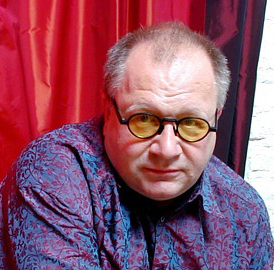


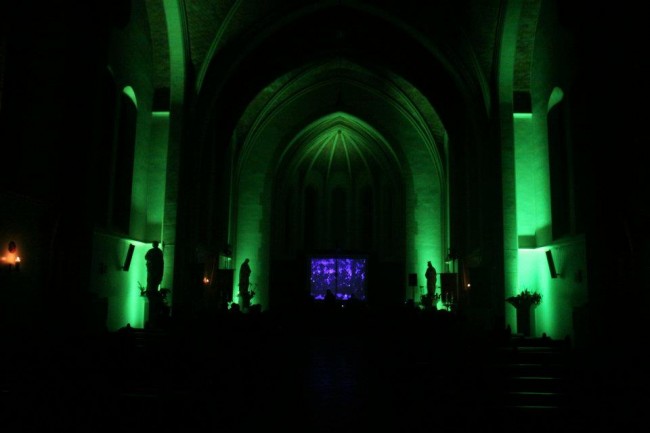
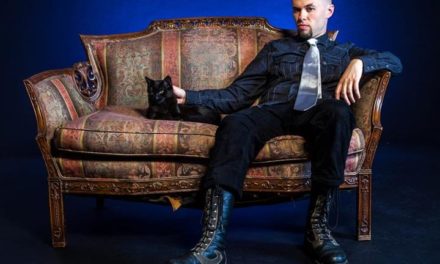
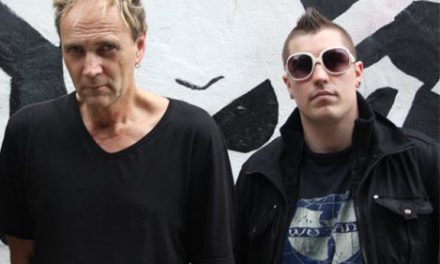

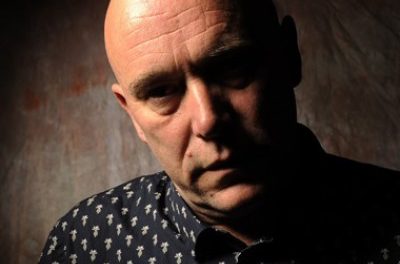
Great interview. Love this project.
Was he probably the real power behind Front 242… who was able to create the masterpieces like Tyranny for You and Up Evil / Evil Off LP’s.
Nothing compares to those albums before and after… unfortunately.
An another NEW interview : https://synthpop80.com/front-242-linterview-verite-dun-groupe-qui-a-su-garder-son-integrite/